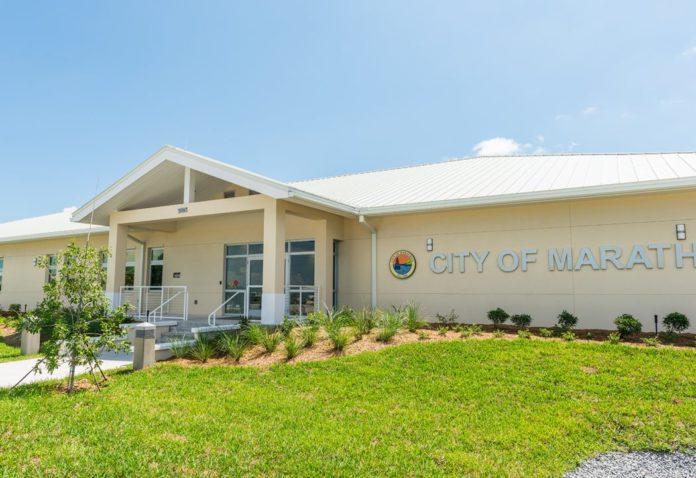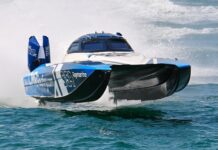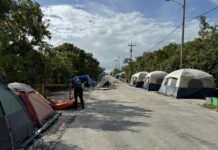Florida Keys National Marine Sanctuary Superintendent Sarah Fangman was at the Marathon City Council meeting on Oct. 8 to address concerns about the Restoration Blueprint in the Middle Keys. Specifically, she addressed the “limited entry” proposal for Sombrero Light.
The blueprint language only addresses how to limit commercial operators (dive boats). Beginning in early September, some residents interpreted that to mean that private boats would not be allowed. On Sept. 19, the Weekly published an article refuting that notion. “We didn’t speak to private entry at all, so silence has been interpreted that we mean to restrict people, community members, citizens and regular folks on their boat. That was never our intention,” Fangman said in the article published a month ago.
At the Marathon meeting on Oct. 8, Marathon Councilman Dan Zieg added an item to the agenda about the subject. He opened by showing an edited video clip from the September Monroe County Commission meeting that showed Beth Ramsay-Vickrey asking about the issue during public comment, and Fangman’s response. After the video showed, Zieg asked Fangman to clarify her statements again.
“It is a proposal intended to speak directly to commercial operator access, who would have commercial operator access. We are NOT proposing to prohibit recreational boaters,” said Fangman.
Councilman Mark Senmartin and Mayor John Bartus thanked Fangman for attending the meeting and promised to encourage residents to respond to the proposal.
“There are so many other important conversations that we need to have about the plan. It’s an important part of the process,” she said.
With the Marathon City election less than a month away, the council seemed willing to debate many philosophical points. After discussion about the Restoration Blueprint, the conversation moved to Marathon’s “look.” Councilman Mark Senmartin put an item on the agenda titled “Design Standards for New Development Task Force.”
“If the council can agree to creating a task force, than this is the first step. Thn we can create a task force, or a committee, that would give us non-binding suggestions. I specifically want to address new development; I’m not telling anyone to knock down their buildings or change the windows,” Senmartin said.
Bartus noted that the city convened a very similar task force in 2001 facilitated by mainland consultant Tony Nelessen. It was hundreds of pages of design suggestions with photos and graphics. “We had more buy in than anything else we’ve ever done as a city,” Bartus said. “But it has been sitting on the shelf ever since, gathering dust. “It should be distributed before the meeting as study material.”
But the conversation never got that far. Councilmen Steve Cook and Dan Zieg had strenuous objections.
“The private sector is already doing that,” Zieg said, about businesses creating attractive spaces to draw in customers.
Cook said a design standard would lead to a “homogenous” look and also said his past experiences with architectural standards in the north were not positive.
The council also discussed the possibility of sea level rise test sites in Marathon, ordinances governing garbage cans left out too long, flooding at the Florida Keys Country Club course encroaching on Sombrero Boulevard and the legality of cargo lifts.
The administrative appeal of the 1,300 affordable and workforce housing units that was set to take place in Marathon this week has been postponed. The appeal challenges former Gov. Rick Scott’s gift of extra building permits to address the crisis following Hurricane Irma. More details to come.

























